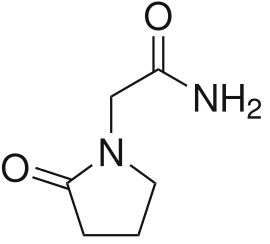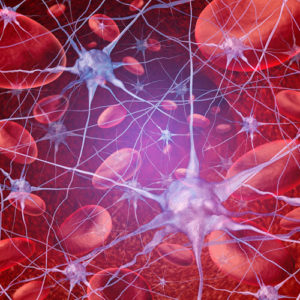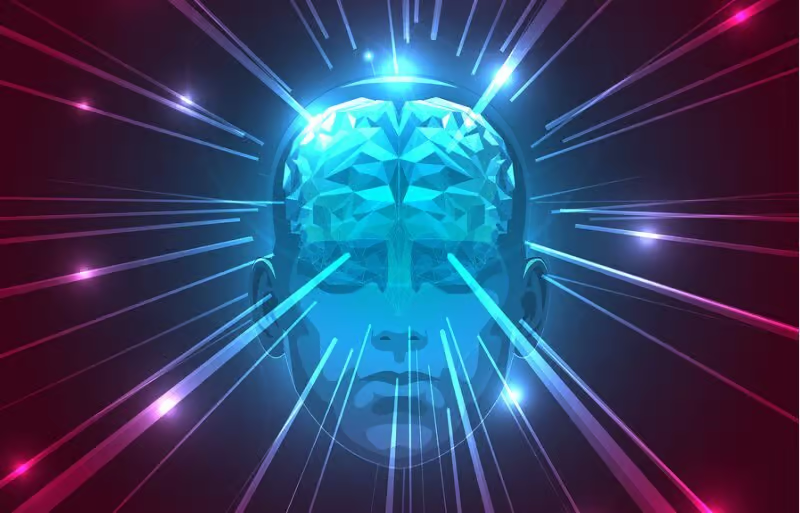Table of Contents
Piracetam (2-oxo-1-pyrrolidine-acetamide, Nootropil) is a water-soluble ampakine nootropic in the racetam-class of compounds.
Piracetam was first synthesized by Dr. Corneliu Giurgea at Belgian-based pharmaceutical company UCB Pharma in the 1964. Piracetam is considered the first true nootropic ever developed.
As a cyclic derivative of GABA, the drug Piracetam was first intended to be a calming type of drug for motion sickness. But in spite of its connection with GABA, Piracetam didn’t show any behavior associated with this calming neurotransmitter. And cannot directly affect GABA receptors.[i]
Instead, Dr. Giurgea discovered that Piracetam was able to boost cognition even in healthy people. The company launched this new ‘drug’ as ‘Nootropil’ in Europe in the early 1970’s. The success of Nootropil soon allowed UCB Pharma to expand its operations which led to many new pharmaceutical drugs.
Dr. Giurgea coined the term “nootropic” to describe this class of cognition-optimizing compounds.[ii] Nootropic was derived from the Greek words for “mind” (noos) and “towards” (tropein).
Piracetam is sold as a prescription drug (Nootropil and Lucetam) in Europe. In South America, Piracetam is sold under the names Noostan (Argentina), Breinox (Venezuela and Ecuador), and Nootropil (Mexico). Piracetam is also branded as Lucetam, Oikamid, Smart, Geratam, Biotropil, Neurobasal, Stimulan and Nocetan in countries around the world.
In the United States, Piracetam is sold as an OTC supplement as Piracetam and Nootropil.
Dozens of racetam derivatives have since been developed based on the original Piracetam. All synthetic compounds, racetams share a pyrrolidone nucleus.
Piracetam modulates AMPA receptors, and boosts the function of acetylcholine in the brain. A favorite racetam among the nootropics community. Neurohackers use Piracetam to boost cognitive function and learning and memory.
If you’re going to start experimenting with racetams, my recommendation at Nootropics Expert is to start with Piracetam. Because it works, it’s safe and it’s cheaper than all the other nootropics in the racetam-family.
Piracetam helps:
- Inflammation: Piracetam is a potent analgesic (anti-pain). This analgesic effect is related to inhibition of inflammatory markers including IL-1β. And the prevention of reduced glutathione, ferric reducing ability and free radical scavenging[iii]
- Neurotransmitters: Piracetam potentiates the flow of, and increases the effect of acetylcholine (ACh) in the brain.[iv] And studies have shown it significantly improves learning and memory.[v]
- Cerebral Blood Flow: Randomized controlled trials show Piracetam increases blood flow in the brain.[vi] Better blood flow delivers more oxygen and nutrients to neurons improving cognition, memory and focus.
What is Piracetam?
Piracetam (2-oxo-1-pyrrolidine-acetamide, Nootropil) was the first in the racetam-family of nootropic compounds. It is a water-soluble ampakine nootropic. AMPA (α-amino-3-hydroxy-5-methyl-4-isoxazolepropionic) refers to one of three glutamate receptors in your brain.[vii]

Developed by a fellow of famous Russian physiologist Ivan Pavlov, Dr. Corneliu Giurgea first synthesized Piracetam at Belgian-based pharmaceutical company UCB Pharma in the 1964.
Since the discovery of Piracetam, dozens of piracetam like drugs (nootropics) have been created in the racetam-class of compounds. And all have a pyrrolidone nucleus at their core.
Piracetam is a cyclic derivative of GABA. But oddly enough, it doesn’t affect GABA receptors in the brain. Instead, Piracetam was found to modulate AMPA and NMDA receptors and improve the function of the neurotransmitter acetylcholine (ACh).
AMPA and NMDA receptors along with acetylcholine are associated with learning and memory.[viii] And when Piracetam is stacked with a choline supplement its effects are even more pronounced. Researchers have shown in hundreds of clinical studies that Piracetam therapy significantly improves learning and memory.
Piracetam also increases regional cerebral blood flow. Blood delivers oxygen and glucose needed for cellular metabolism, and helps carry away cellular waste. Critical for the highly optimized brain.
Piracetam is sold as a prescription drug in many countries around the world. In the United States, Piracetam is sold as an unregulated OTC research compound.
How does Piracetam work in the Brain?
Piracetam boosts brain health and function in several ways. But two in particular stand out.
- Piracetam modulates AMPA and NMDA receptors in the brain. And improves the flow of acetylcholine (ACh) and sensitivity and density of ACh receptors.[ix]
This German study conducted with lab mice showed the pharmacological properties of Piracetam treatment elevated NMDA receptor density. And normalized the way those receptors worked with L-Glutamate similar to that of a healthy brain.
Deficits at the level of NMDA receptors could be one of the mechanisms of action underlying age-related cognitive decline. Studies show that nootropics like piracetam might act in part by restoring age-related deficits of central muscarinic cholinergic receptor density. And the researchers concluded that Piracetam showed cognition-enhancing properties.[x]
This effect on NMDA receptor sites is directly related to our interest in using Piracetam for Long-Term Potentiation and the support of long-term memory formation.
Neuroplasticity is dependent on activation of NMDA receptors.[xi] And this neuroplasticity is at the heart of memory formation. Reviews of Piracetam used by neurohackers frequently report the return of long-lost memories. Further proof of the efficacy in using Piracetam to support learning and memory.
- Piracetam increases cerebral blood flow. Several studies have shown how Piracetam positively influences brain blood flow. Cerebral blood flow is critical for cognitive function and the highly optimized brain. Blood delivers oxygen and local cerebral glucose utilization needed for cellular metabolism, and helps carry away cellular waste.[xii]
Strokes can be caused by an interruption in cerebral blood flow. Starving parts of the brain of oxygen and glucose. This double-blind, placebo-controlled study was done with 24 stroke patients. One group received 2,400 mg of Piracetam twice daily, and the other a placebo.
Before treatment, both groups were comparable in performance during language tasks. The study found that Piracetam treatment improved recovery of various language functions. And this effect was attributed to increased blood circulation to areas of the brain related to language. The placebo group showed very little improvement in areas of language.[xiii]
How things go bad
As we get older, our brain chemistry and metabolism changes. And it seems these changes are affecting younger and younger people.
↓ Recall, reaction time and learning capacity declines
↓ ATP energy levels decline
↓ Density of AMPA and NMDA receptors decline
↓ Acetylcholine levels decline
↓ Cerebral blood flow declines
All of these changes are contributing factors to age-related cognitive decline. Early signs of these effects can be seen in poor decision-making, difficulty learning, and even recalling simple things like an important appointment.
But even if you’re not concerned with the signs of aging, Piracetam can help.
Piracetam benefits
Piracetam helps increase blood flow in the brain, improves oxygen levels, enhances glucose use in brain cells, maintains brain cell mitochondria and ATP synthesis.
Piracetam is also a potent modulator of AMPA-sensitive glutamate receptors in neurons. It increases the density of specific binding sites for AMPA in neuronal synapses.[xiv]
Glutamate is the primary excitatory neurotransmitter in your brain. This glutamate activity by Piracetam affects alertness, focus, attention, memory and learning. And one of the reasons why neurohackers consistently report that Piracetam improves mental performance and memory.
Piracetam increases high-affinity choline uptake (HACU) which is the process that occurs in cholinergic nerve endings and facilitates acetylcholine (ACh) formation. Boosting ACh with Piracetam produces a powerful effect on learning and memory.[xv]
Piracetam also boosts choline receptor density in the frontal cortex. The area of your brain used for working memory and decision-making.[xvi]
ATP energy is critical to your brain’s survival. Brain cells must produce all of their own ATP from glucose and oxygen. This brain energy carbohydrate metabolism depends on cerebral blood flow, oxygen uptake and glucose. Piracetam enhances this glucose utilization, and increases ATP synthesis within brain cell mitochondria.[xvii]
And Piracetam has analgesic (anti-pain) benefits. This anti-pain action is linked to Piracetam’s anti-inflammatory properties.[xviii] Inflammation can cause pain, and studies have shown Piracetam can have profound effect on pain.
And clinical research shows Piracetam may reduce the incidence of painful sickle cell disease crises in those suffering from sickle cell anemia.. But the research is limited and some studies dispute the clinical efficacy of using Piracetam for sickle cell anemia.
Piracetam boosts the use of acetylcholine so you should add a good choline source. Try Alpha GPC or CDP-Choline with Piracetam. And give your brain the choline it needs.
How does Piracetam feel?
Most neurohackers report a noticeable benefit from Piracetam after about 2 weeks. Consider that Piracetam is modulating your brain’s chemistry. And this change is unlikely to occur immediately.
Your brain needs some time to adjust to the new change in acetylcholine (ACh) levels and how it uses it. Increased cerebral blood flow takes a while to bring up levels of oxygen and nutrients. And for your neuronal cells to respond. Your mileage may vary depending on your own neuro-chemical makeup.
Many suggest starting with an ‘attack dose’ for the first 3-days. A 3,000 mg ‘attack dose’ of Piracetam for example to start with theoretically gets more of the supplement into your system right away. So it takes less time to build up before you start feeling the effects.
From there step down to a maintenance dose and vary the quantity until you find your own sweet spot.
Once you begin to notice the effects of Piracetam you’re likely to feel a mood boost, less social anxiety, heightened creativity, improved verbal fluency and better memory.
Piracetam does boost your brain’s use of acetylcholine. So you will likely find that adding a good choline source (Alpha GPC or CDP-Choline) to your Piracetam stack helps.
Piracetam Clinical Research
 We have plenty of evidence that Piracetam improves memory in animals and people who are suffering from many types of cognitive impairment. Keep in mind that most of the scientific research available for nootropics is done with sick people trying to get well.
We have plenty of evidence that Piracetam improves memory in animals and people who are suffering from many types of cognitive impairment. Keep in mind that most of the scientific research available for nootropics is done with sick people trying to get well.
The return on investment for research at institutions and universities comes from treating diseases. And not from helping ordinary biohackers like us trying to get a competitive advantage at work or in school.
We can however extrapolate the findings from these studies and learn if and how something like Piracetam can help our memory and cognition. Once-in-awhile someone does take the time to conduct such a study on healthy people. Like this one done with normal, healthy volunteers.
Researchers gave this healthy group of participants four 400 mg capsules of Piracetam 3-times per day (4,800 mg total) for 14 days. No effects on memory were observed after 7 days during this experiment. But after 14 days verbal learning had significantly increased.[xix]
Piracetam Improves Cognition
Researchers in Belgium (where Piracetam originated) conducted an analysis of 19 double-blind, placebo-controlled studies done with patients suffering dementia or cognitive disorders and who took Piracetam.
The results of this meta-analysis demonstrated the difference between people who used Piracetam or used a placebo. The end result of this analysis provided compelling evidence for the usefulness of Piracetam in a diverse group of people with cognitive impairment and for boosting brain function.[xx]
Several studies and user reviews have shown that Piracetam dosage makes a difference. And unlike some other nootropics where you start at a lower dose and work your way up, with Piracetam I recommend you start at a higher suggested dose.
This study in Germany with 78 elderly patients showed that there was a significant difference in cognition improvement while dosing Piracetam at 1,600 mg 3-times per day. There was no difference in cognition with patients who received 800 mg 3-times per day.[xxi] Dosage matters when using Piracetam.
Piracetam Enhances ATP Production
Piracetam is used around the world to treat cognitive impairment in aging, brain injuries, dementia and Alzheimer’s Disease. Several studies show that Piracetam enhances ATP production, mitochondrial membranes and neurite outgrowth in neurons.
In this study, scientists investigated the effects of Piracetam on mitochondrial function. Human brain cells were treated with Piracetam under normal conditions and under conditions imitating aging and damage by ROS (reactive oxygen species). And with cells representing early-stage Alzheimer’s Disease.
The cells representing Alzheimer’s conditions showed impaired mitochondrial function under baseline conditions. Piracetam was able to restore this impairment in cells and shift mitochondrial function back to normal.
The researchers showed that the metabolic enhancer Piracetam is able to repair mitochondria in those with mild Alzheimer’s and return cell function back to normal.[xxii]
Piracetam for the Treatment of Tardive Dyskinesia
Tardive Dyskinesia is a serious, and often disabling movement disorder often caused by meds that are used to block dopamine receptors.
There is no current standard treatment for this disorder in mainstream medicine.
But this is where nootropics come to the rescue once again. A study conducted at Be’er Sheva Mental Health Center at Ben-Gurion University in Israel with 40 patients suffering with Tardive Dyskinesia.
Study participants were randomly assigned either 4,800 mg/day of Piracetam or a placebo for 4 weeks. The study authors concluded at the end of the study “Piracetam appears to be effective in reducing symptoms of tardive dyskinesia.”
Piracetam recommended dosage
Recommended Piracetam dosage is 1,600 mg 3-times per day. One Piracetam dose in the morning, and one in the early afternoon, and one later in the afternoon.
You will likely want to start with an ‘attack dose’ when you’re first starting out with Piracetam. Refer to the “How does Piracetam feel?” section of this article for more on ‘attack doses’.
Dosing Piracetam varies widely between neurohackers. Experimenting and finding the dose where you experience the most benefit is key. You may find a lower dose works well for you. Or you may find you need to increase your dose even more. Dosing Piracetam is directly related to your own unique neurochemistry.
Piracetam Side Effects
Piracetam is non-toxic. So is considered well-tolerated and safe.
As with many of the racetams, Piracetam can cause headaches because it boosts the use of acetylcholine in your brain. Choline supplements like Alpha GPC or CDP-Choline can help you avoid this side effect.
Many neurohackers find that stacking Piracetam with a choline supplement boosts the effect with improved memory and cognition. And this is supported in several research studies.[xxiii]
Where to buy Piracetam
Piracetam is sold in tablet, capsule and powder form. Tablets and capsules are usually 800 mg each.
I recommend Click for Cosmic Nootropic – Piracetam or Click for Science.bio- Piracetam who sell Piracetam as a “research” compound. It is sold to be used in an academic laboratory research setting. They go on to state “nothing we sell is intended for nor is it manufactured for diagnostic or therapeutic purposes in humans.”
In Europe, Asia, South America and some other countries around the world, Piracetam is a prescription drug. And sold under many different brand names (including Nootropil). Refer to the Introduction of this article for some of these brand names.
Nootropics Expert Recommendation
Piracetam 1,600 mg 3-times per day
 I recommend using Piracetam as a nootropic supplement.
I recommend using Piracetam as a nootropic supplement.
Your body does not make Piracetam on its own. So to get its benefits you must take it as a supplement.
If you’re going to start experimenting with racetams, our recommendation at Nootropics Expert is to start with Piracetam. Because it works, it’s safe and it’s cheaper than all the other nootropics in the racetam-family.
Piracetam is especially helpful for those suffering from most types of age-related cognitive decline.
Piracetam is also particularly useful to students and executives who want to enhance cognitive functioning, learning and memory.
You should use Piracetam with a good choline supplement like Alpha GPC or CDP-Choline. It helps boost neural acetylcholine, so demands the presence of more choline in your brain.
You can safely boost daily intake of Piracetam to 9,600 mg if needed. Studies have shown that Piracetam is completely non-toxic even at high doses. You may find however that a lower dose than our recommended amount works better for you.
I recommend Click for Cosmic Nootropic – Piracetam or Click for Science.bio- Piracetam









Join The Discussion - 219 comments
David
October 31, 2019
I often see people mention Alpha GPC or CDP-Choline as choline sources when using Piracetam. What about soy lecithin? It’s what I have easy access to. It’s a precursor to choline. Will it be as effective as one of the other mentioned choline sources, or should i not bother with lecithin and go for one of the others?
David Tomen
October 31, 2019
David, soy lecithin is not an effective source of choline. And lecithin is NOT a precursor to choline. Supplements like Phosphatidylcholine are derived from soy or sunflower lecithin during processing. With an emphasis on “derived from”. It’s not precursor.
Alpha GPC and CDP-Choline on the other had are precursors to acetylcholine because they produce a choline molecule in the synthesis of acetylcholine.
You can read more about choline and its sources here: https://nootropicsexpert.com/advanced-guide-to-choline-in-nootropic-stacks/. That post explains in detail how the synthesis of acetylcholine works and where those two nootropics come into play. No where in that cycle does lecithin appear.
Piracetam potentiates the flow of, and increases the effect of acetylcholine (ACh) in the brain. And that’s where Alpha GPC or CDP-Choline come into play.
Maicon
October 15, 2019
Some racetams have made me sleepy after a few minutes. What can it be?
(Piracetam;Oxiracetam)
David Tomen
October 15, 2019
Maicon, without knowing more about how you used them it’s likely because you didn’t take it with a choline supplement. And you deplete your brain of acetylcholine.
fdj815
June 16, 2019
David
I am new to racetams, so I have a couple of questions. On several websites, including this one, it is suggested that it’s better to start with piracetam before moving on to the other forms of racetams.
—How long would you recommend taking piracetam before
moving on to other racetams?
—Are there any racetams that should and should not be
stacked together?
I’m sure I’ll have more questions in the future. I appreciate your response.
Thanks.
David Tomen
June 17, 2019
Starting the racetams is not a ‘hard and fast’ rule in my opinion. And since I wrote this review. It is a good safe starting point with the racetams but the rest are safe as well if dosage recommendations are followed closely.
I would hesitate to mix any of the racetams. At most I’d use two but adjust dosages down to the lowest recommended dose for each or less. And possibly increasing the choline supplement to support them.
fdj815
June 21, 2019
David
Thanks much for your response. It is very helpful. As I continue my research I’m sure I’ll additional questions. Will check back when I put together the stack I intend to use.
Thanks again..
Erik
February 6, 2019
David,
I’ve been using Aniracetam for the past month or so, works well for me. I found a stack someone recommended and decided to experiment with it. 750mg of Aniracetam with 800mg of Piracetam twice daily. I’ve taken this 3 days in a row now and have felt “ON” , i’m highly motivated at work, more social, handling stress better etc. Is this sustainable? Can i cycle this with say Oxiracetam and Piracetam as i’m not taking a full dose of Piracetam. Also which racetams stack well together.
David Tomen
February 8, 2019
Erik, it is sustainable as long as you are following the dosage recommendations. You may get to a ‘new normal’ and thing they are not working as well. So watch for that.
You can try switching out Oxiracetam and Piracetam to mix it up a little. I wouldn’t suggest stacking them.
Erik Gomez
January 27, 2019
Hi there, Thanks for this blog. I’ve decided to give piracetam a try. What legid and sage vendors would you recommend. Thanks
Erik
David Tomen
January 28, 2019
Erik, I’ve been using Nootropics Depot for racetams lately and been happy with their prices and service.
Eddie
January 18, 2019
Hey David, thank you for all your work. I am new to nootropics and I’m. Hoping to get some of your feedback regarding my stack I am a 23 year old male, I have always struggled with focus, concentration, sociability, high levels of anxiety, depression, substance abuse, the whole 9 yards and so far my stack has done wonders for me in the sense of feeling well, and it has helped getting my stuff done too! Daily, I take:
Lions mane (love this one)
L-thaenine …600mg
NAC …1200mg
Phosphatydilserine …300mg
Bacopa stand.20%bac …900mg
Alpha GPC …600mg- 1200mg
Vinpocetine… 30-60mg
Sulbutiamine(every other day) 400 mg
Huperzine A (also cycled) 200mcg
I used to take alpha brain before I even knew what nootropics we’re back in high school, so my body knows some of these substances already, it’s been about a week and a half on this stack and so far nothing but positive results, I want to try Piracetam is this ok?
Thanks again David.
David Tomen
January 18, 2019
Eddie, Piracetam may be a good choice with this stack. You’re already using adequate Alpha GPC so my only other suggest is to follow the dosage recommendations in the piracetam review > https://nootropicsexpert.com/piracetam/. And see how it works for you.
Eddie
January 18, 2019
Thank you!
Christy
January 16, 2019
Our family has Lyme and the brain fog that goes with it. Also Adrenal Fatigue. Is Piracetam safe for us? Does it increase Glutamate in the brain?
David Tomen
January 17, 2019
Christy, Piracetam does NOT raise glutamate in the brain. But it does modulate glutamate receptors so they work more like would in a healthy brain.
Carlos
November 28, 2018
Hello David, I’ve just started experimenting with nootropics so there’s probably still much I’m missing in my understanding. I’ve been taking Piracetam for a few weeks, getting a _very_ subtle effect from it (relatively high doses), yet still noticeable and posive (mostly a slight mood boost).
Now, I’ve had a couple of recent experiences with it where things have gone wrong, namely entering a state of absolute lack of motivation: my processing and language capabilities are unimpaired as far as I can tell, I got enough energy, no headaches or brain fog, but zero drive to keep going, which is obviously detrimental for my work. Now, it’s hard for me to know what is the actual cause or mechanisms by which this is happening since I’m also taking other things like DHA, Ashwagandha and L-Theanine to regulate potential jitteriness, and coffee. First time this happened I was also on Modafinil (not drinking coffee, but I did have a sip of green tea and that moment everything went wrong)…
So, maybe you can help me understand what might be the cause of this reaction, it’s very close to a depression and I’ve never suffered from depression before… Might it be a bad synergy between the Piracetam and caffeine (today I was feeling great until I had coffee)? Might it be a too high dose of Piracetam (about 7g split during the day but before afternoon)?…
Also, I’m curious about the mechanisms of action and making my best to undertand how all of this works. I’ve come to understand that I might be Acetylcholine dominant, so can these depression incidents be attributed to an an excess in ACh by itself? Or maybe something is causing a lowering in my Dopamine levels?… Any light you might throw in on this matter I will highly appreciate it.
Thanks.
David Tomen
November 28, 2018
Carlos, please read this review on Piracetam again carefully. And pay special attention to the sections “How does Piracetam work in the brain?” and “Piracetam to the rescue”.
You’ll notice mention over and over again of Piracetam’s affect on acetylcholine formation. But if you do not supply the raw ingredients or precursors for acetylcholine synthesis you’ll run into trouble using Piracetam.
You must stack Piracetam with a good choline source like Alpha GPC or CDP-Choline for this nootropic to function as designed. It doesn’t make any difference whether you are “acetylcholine dominant” or not. Piracetam demands to be stacked with a choline source.
And as a side note; acetylcholine does affect dopamine signaling. Not enough acetylcholine will have negative effects on the dopamine system in your brain.